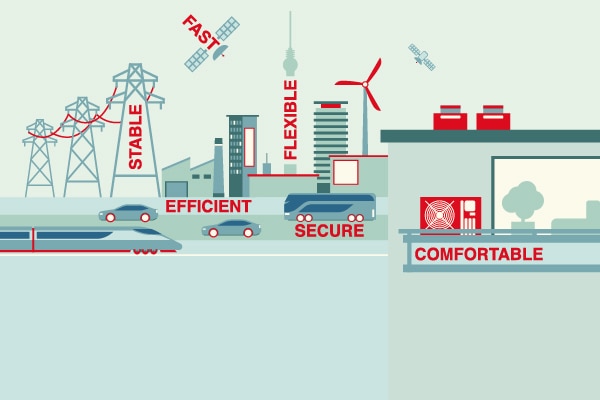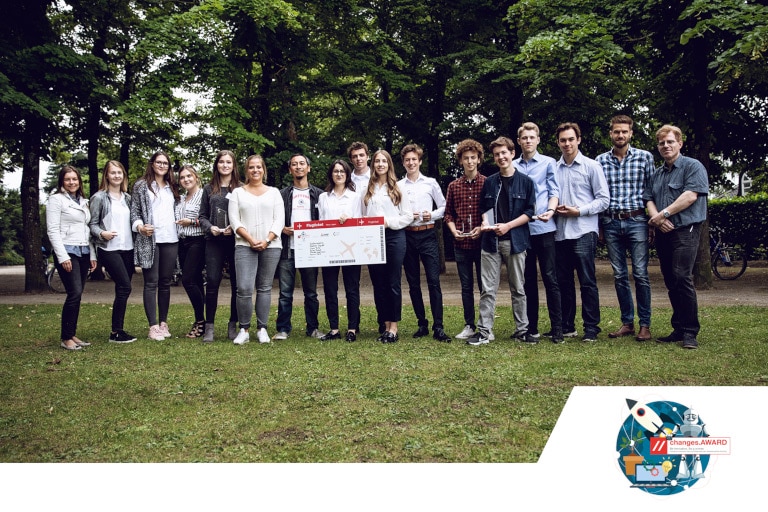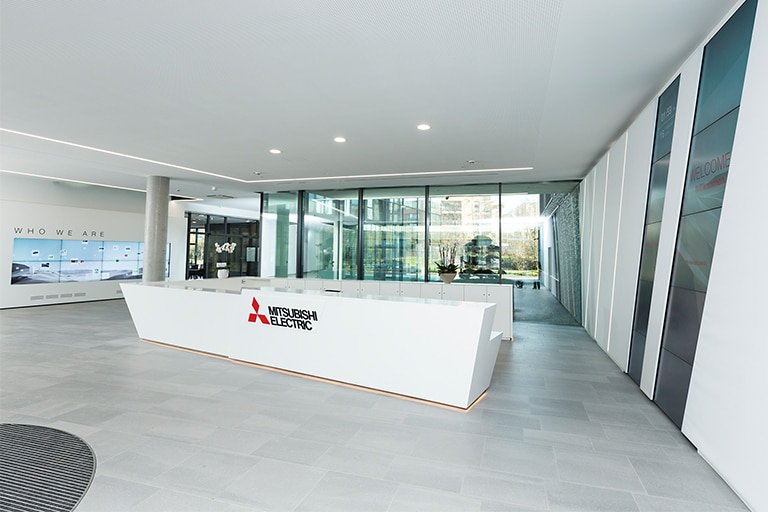News Releases
Edge computing holds the key to IT/OT integration
SPS Connect 2020, 24 – 26th November 2020
The digital transformation of industry has given new momentum to the connection of the operational technology of the plant floor to the information technology of the higher-level enterprise. However, making the most of the potential of digitalisation requires more than just a network connection between these two levels of the business.
Christian Nomine, Strategic Product Manager Visualisation, Mitsubishi Electric Europe B.V. explains how Edge computing provides an essential middle layer between the two, giving manufacturers the tools, they need for the smart connection of their business processes.
The goal of the digital transformation is to provide a foundation to boost productivity, increase product quality, optimise asset availability and maximise plant utilisation, to better meet the real-time demand requirements of customers. That foundation is built on a rapidly growing network of increasingly sophisticated plant floor devices – the so-called Industrial Internet of Things (IIoT) – all generating data related to different aspects of a plant’s operations.
But surely data is data. Why should a direct vertical link between the shop floor and the higher-level business systems not be a sufficient enabler to realise the goal of the digital transformation described above? The answer lies in the way in which information technology (IT) and operational technology (OT) platforms have evolved to deal with different types of data with different processing requirements. The OT world now operates in real-time with process speeds of seconds or below; the IT world in contrast operates at much greater sampling times, from minutes to hours or longer.
Behind the model of Industry 4.0 is the need for the OT and IT spaces to each capitalise on the data the other can provide. But neither is set up to translate and interpret the data received from the other in a fashion or timescale that can have a direct impact on the plant floor operations in real time. As the digital transformation progresses, the result of direct IT/OT integration is often simply one delivering high volumes of unfiltered data instead of just the relevant information that is needed to drive genuine improvements in operations.
Some have argued perhaps the Cloud could provide an environment for managing these high volumes of data, providing a platform for efficient data aggregation, filtering and analysis. And certainly, protocols like OPC UA can provide a direct link from the shop floor, through the higher-level systems and on to the Cloud. But while the Cloud provides an ideal platform to develop knowledge about the plant operations, it is not the right platform to turn knowledge into action for the production operations. Yes, it can provide useful and essential data analytics functions, but not the real-time aggregation and analytics that are needed at the OT/IT bridge.
Bridging the divide
A more appropriate solution for OT/IT integration is provided by the new smart technology that is appearing at the ‘Edge’. Forming an intermediate layer between the shop floor and the higher-level business systems, these Edge computing technologies provide a simple interface between the IT and OT worlds, as well as new options for where data analysis takes place.
Mitsubishi Electric’s MELIPC Edge-Computing solution offers this functionality combined with OPC UA compatibility. Data can be pre-processed locally and aggregated to create valuable information for the systems that need it. And it can seamlessly connect the shop floor with higher level IT systems such as MES and ERP platforms.
By performing sophisticated data analysis in real-time, increasingly making use of AI algorithms as well as machine learning to deal more intelligently with data, the MELIPC is able to make improved production efficiencies a reality. The cost of data processing can also be considerably reduced, as only the information that is necessary and relevant is passed from one level of the enterprise to the other.
The MELIPC provides a real time data logging and processing environment in a ruggedized industrial form factor. From a data processing perspective, it incorporates a suite of analytical tools including multiple regression analysis, the Mahalanobis-Taguchi system and Statistical Process Control (SPC) as well as AI functionality such as Similar Waveform recognition – giving feedback to the plant floor in real time.
As a result, it can combine functions from data collection, filtering, processing and analysis utilising shop floor knowhow with diagnosis and predictive maintenance feedback. This occurs within a real-time information flow that can drive the production systems’ decisions. It delivers a foundation for the digital transformation of the business, providing a platform for connecting machines and devices so that manufacturing processes can react more quickly and more intelligently to production changes, whether they be asset-centric, demand-led or supply-driven.
The rising volumes of data from the plant floor, and the requirement to use that data more intelligently is both an enabler for the digital transformation of industry and a challenge. Edge computing as an intermediate layer between IT and OT is the answer to that challenge, paving the way for the event-driven architecture that defines Industry 4.0. It is the key enabler for any manufacturing plant to realise the potential of transforming into a smart operation. This technology provides the natural bridge between the worlds of OT and IT in a format that both sides of the divide can embrace.

[Source: Mitsubishi Electric Corporation, Japan]
Christian Nomine, Strategic Product Manager Visualisation, Mitsubishi Electric Europe B.V.
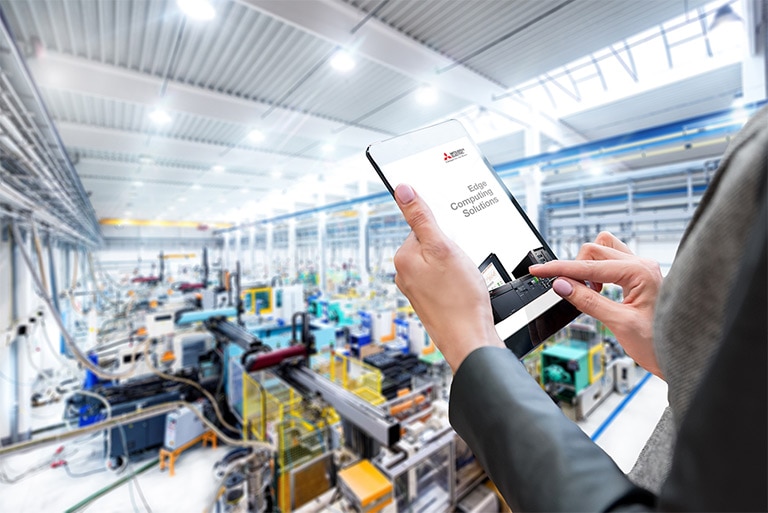
[Source: Mitsubishi Electric Corporation, Japan]
The digital transformation of a business is dependent on forming an intermediate layer between the shop floor and the higher-level business systems, by using Edge computing solutions.
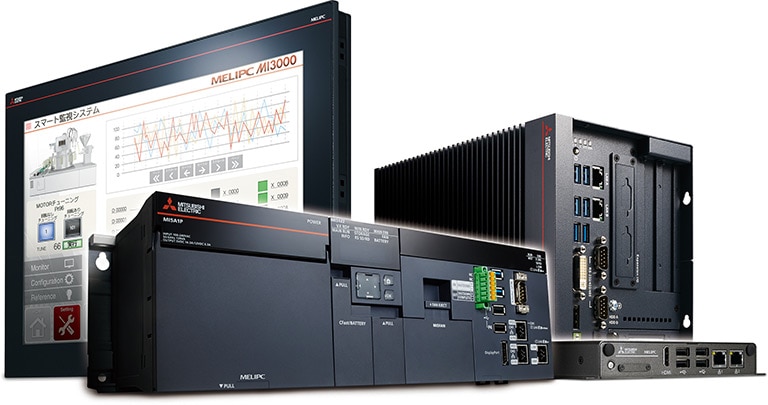
[Source: Mitsubishi Electric Corporation, Japan]
The MELIPC Edge Computing solution from Mitsubishi Electric is able to make improved production efficiencies a reality.
About Mitsubishi Electric
With nearly 100 years of experience in providing reliable, high-quality products, Mitsubishi Electric Corporation is a recognized world leader in the manufacture, marketing and sales of electrical and electronic equipment used in information processing and communications, space development and satellite communications, consumer electronics, industrial technology, energy, mobility and building technology, as well as heating, cooling and air-conditioning technology.
Embracing the spirit of its corporate statement, Changes for the Better, and its environmental statement, Eco Changes, Mitsubishi Electric endeavours to be a global, leading green company, enriching society with technology.
With around 146,500 employees the company recorded consolidated group sales of 40.9 billion US Dollar* in the fiscal year ended March 31, 2020.
Our sales offices, research & development centres and manufacturing plants are located in over 30 countries.
Factory Automation EMEA
Mitsubishi Electric Europe B.V., Factory Automation EMEA has its European headquarters in Ratingen near Dusseldorf, Germany. It is a part of Mitsubishi Electric Europe B.V. that has been represented in Germany since 1978, a wholly owned subsidiary of Mitsubishi Electric Corporation, Japan.
The role of Factory Automation EMEA is to manage sales, service and support across its network of local branches and distributors throughout the EMEA region.
- *At an exchange rate of 109 yen to the US dollar, the rate given by the Tokyo Foreign Exchange
Market on March 31, 2020
Note
Note that the press releases are accurate at the time of publication but may be subject to change without notice.


